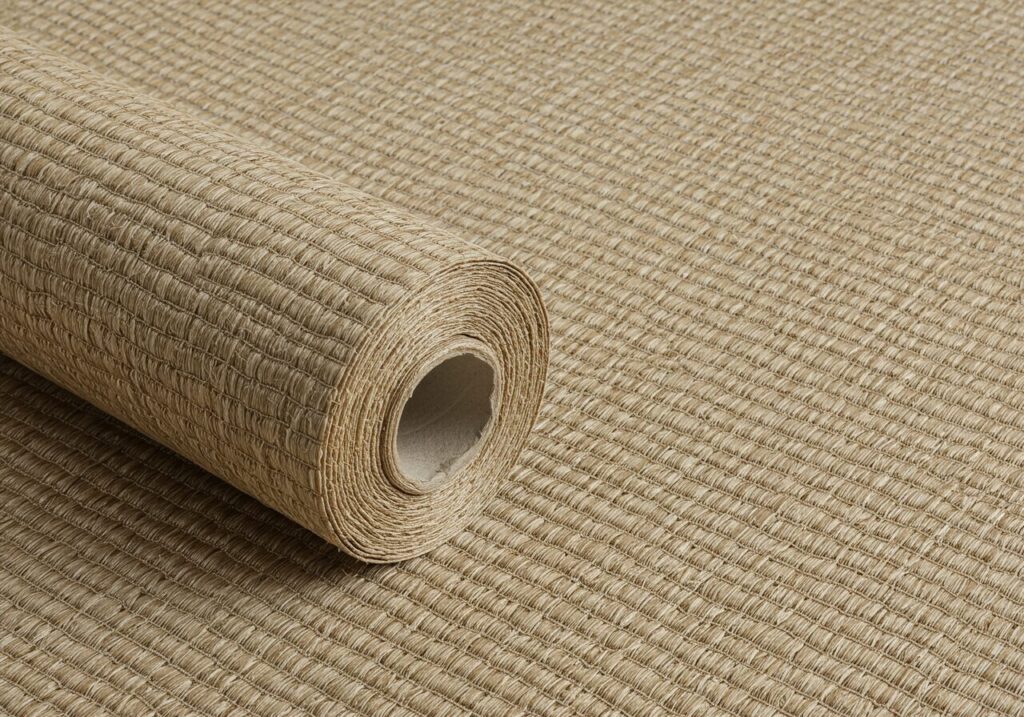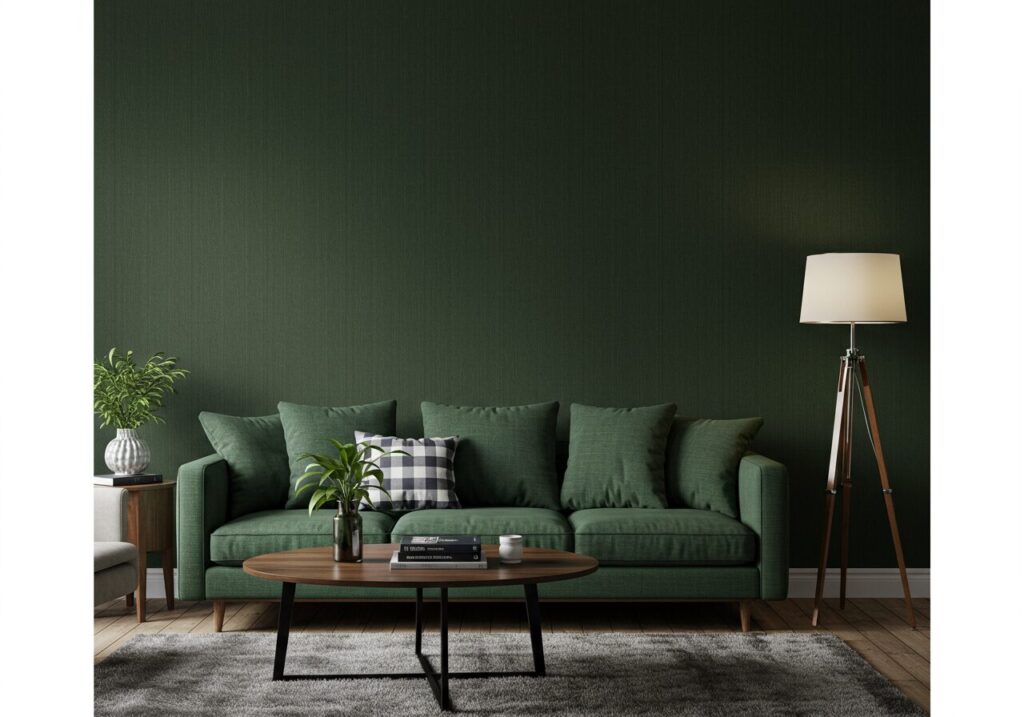Grasscloth wallpaper can transform a room from ordinary to extraordinary, adding a layer of texture, warmth, and natural beauty that few other wallcoverings can match. If you’re captivated by its unique charm but are hesitant about its practicality, you’ve come to the right place. This guide will walk you through everything you need to know about this exquisite material.
We’ll delve into the many benefits of grasscloth, honestly assess its drawbacks, and provide you with expert tips on installation and care. By the end of this article, you’ll have a clear understanding of whether grasscloth wallpaper is the perfect choice for your home.
What Exactly is Grasscloth Wallpaper?
Grasscloth wallpaper is a type of wallcovering crafted from natural plant fibers that are woven together and backed with paper or a similar material. The term “grasscloth” is often used as a catch-all for a variety of natural fiber wallpapers.
Common Materials Used in Grasscloth:
- Seagrass: Known for its rich texture and natural, earthy tones.
- Jute: Offers a rustic, slightly coarse texture, often in warm, golden hues.
- Arrowroot: Creates a finer, more delicate weave.
- Sisal: Prized for its durability and beautiful, subtle sheen.
- Bamboo: Provides a more structured, linear appearance.
- Hemp: A strong and sustainable option with a distinctive texture.
Each of these materials brings its unique character to the wallpaper, resulting in a truly one-of-a-kind finish for your walls. The handmade nature of grasscloth means that no two rolls are exactly alike, adding to its bespoke appeal.

The Allure of Grasscloth: The Pros
The popularity of grasscloth wallpaper isn’t just a fleeting trend. Its enduring appeal lies in a combination of aesthetic and practical benefits. Understanding the pros of grasscloth can help you decide if it’s the right fit for your design vision.
Unmatched Natural Beauty and Texture
The most significant advantage of grasscloth is its unparalleled texture and visual depth. Unlike flat, printed wallpapers, grasscloth brings a three-dimensional quality to your walls, making a room feel instantly more sophisticated and curated. The natural variations in the fibers create a subtle, organic pattern that is both visually interesting and calming.
Environmentally Friendly and Sustainable
For the eco-conscious homeowner, grasscloth is an excellent choice. Made from renewable resources like jute, seagrass, and bamboo, it is a sustainable and biodegradable option. This makes it a much greener alternative to many vinyl-based wallpapers. For more information on sustainable building materials, you can explore resources like the U.S. Green Building Council.
Versatility in Design
From coastal and bohemian to traditional and modern, grasscloth wallpaper is incredibly versatile. Its wide range of colors and textures allows it to complement a variety of interior design styles.
- For a coastal look: Opt for a light blue or sandy-toned grasscloth.
- For a modern aesthetic: A charcoal gray or deep navy can create a dramatic, chic backdrop.
- For a traditional space: Rich, warm tones of brown or green can add a touch of classic elegance.
Hides Minor Wall Imperfections
The textured nature of grasscloth can be quite forgiving when it comes to minor flaws in your walls. Small bumps, cracks, or an uneven surface may be less noticeable under a layer of woven fibers, which can save you time and money on extensive wall preparation.

The Reality of Grasscloth: The Cons
While there is much to love about grasscloth, it’s essential to be aware of its potential downsides. The grasscloth pros and cons are important to weigh before making a final decision.
It’s a Delicate Material
Perhaps the biggest drawback of grasscloth is its delicate nature. It is not as durable as vinyl or other synthetic wallpapers. The natural fibers can be prone to snagging, tearing, and bruising, making it unsuitable for high-traffic areas like hallways, children’s rooms, or playrooms.
Susceptible to Stains and Water Damage
Grasscloth is highly absorbent, which means it can stain easily and is not water-resistant. Spills and splashes can leave permanent marks, and it should not be installed in humid environments like full bathrooms or as a kitchen backsplash where it might come into contact with water or grease.
The Installation Can Be Tricky
Installing grasscloth wallpaper requires a level of precision and care that is greater than that for standard wallpaper.
- Visible Seams: Due to its natural, hand-woven construction, the seams between panels are often visible, creating a “paneling” effect. This is considered part of its charm, but it’s something to be aware of.
- Special Adhesive: A specific, clear, non-staining adhesive is required to prevent discoloration of the natural fibers.
- Professional Installation Recommended: To ensure the best results, it is highly recommended to hire a professional installer who has experience with grasscloth. If you’re considering a DIY approach, check out this This Old House guide to wallpaper installation for general tips, but remember grasscloth has unique requirements.
Higher Cost
Generally, grasscloth wallpaper is more expensive than traditional wallpaper. The cost reflects the natural materials and the labor-intensive process of weaving and manufacturing. While it is a significant investment, its unique beauty often justifies the price for many homeowners.
Caring for Your Grasscloth Wallpaper
Proper care is crucial to maintaining the beauty of your grasscloth for years to come. Given its delicate nature, a gentle approach is key.
Regular Dusting
The texture of grasscloth can trap dust. To keep it looking fresh, dust it regularly with a soft, dry cloth or the brush attachment of your vacuum cleaner. Use a gentle, vertical motion to avoid snagging the fibers.
Dealing with Spills and Stains
If a spill occurs, act quickly. Blot the area immediately with a clean, white cloth. Do not rub, as this can damage the fibers and spread the stain. For more stubborn spots, you can gently dab the area with a cloth slightly dampened with a mild solution of clear dish soap and water. Always test in an inconspicuous area first.
What to Avoid:
- Harsh chemical cleaners: These can discolor and damage the natural fibers.
- Excessive water: Never saturate the wallpaper, as this can cause the fibers to swell and may weaken the adhesive.
- Scrubbing: Abrasive sponges or vigorous rubbing will irreparably harm the delicate weave.
Is Grasscloth Wallpaper Right for You?
To help you make your final decision, ask yourself the following questions:
- Where will it be installed? Grasscloth is best suited for low-traffic areas like bedrooms, dining rooms, home offices, and formal living rooms.
- What is your lifestyle? If you have young children or pets, you might want to consider a more durable option or use grasscloth in a less accessible area.
- What is your budget? Be prepared for a higher material and installation cost compared to other wallcoverings.
- Are you comfortable with its natural imperfections? The visible seams and variations in color and texture are part of its organic charm.
Ultimately, choosing grasscloth wallpaper is about embracing its unique qualities. If you appreciate its natural beauty, understand its limitations, and are prepared for the necessary care, it can be a stunning and rewarding addition to your home.
Ready to explore other wallpaper options? Check out our Guide to Different Types of Wallpaper. If you’re looking for more design inspiration, our Living Room Design Ideas page has plenty to spark your creativity.



